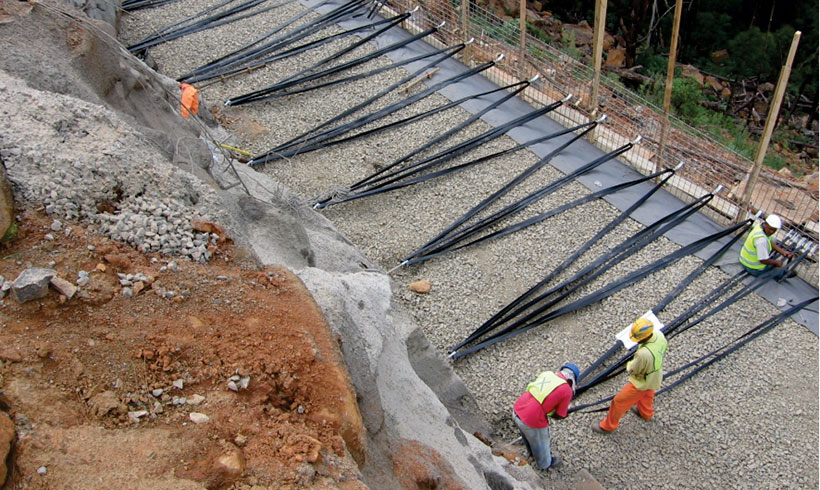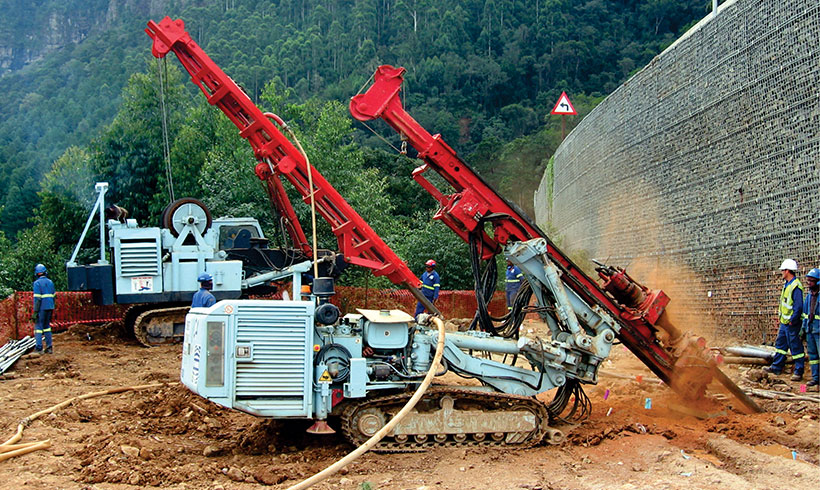Not known Details About Geotechnical Engineering For Construction Projects
Not known Details About Geotechnical Engineering For Construction Projects
Blog Article
The smart Trick of Geotechnical Engineering For Construction Projects That Nobody is Discussing
Table of ContentsThe Best Guide To Geotechnical Engineering For Construction ProjectsThe Main Principles Of Geotechnical Engineering For Construction Projects Not known Details About Geotechnical Engineering For Construction Projects Some Known Questions About Geotechnical Engineering For Construction Projects.The Best Strategy To Use For Geotechnical Engineering For Construction Projects
For that reason, throughout the examination, it is crucial to pierce at the called for depth and the needed variety of openings based on the suggestion of the Canadian Foundation Design requirement. Sometimes, the owner may save some Geotechnical Examination expense but end up investing greater than the anticipated during the building price.The responsibilities of the geotechnical consultant include giving product testing for building and construction assistance. Geotechnical Engineering for Construction Projects. Geotechnical designers analyse all the area test reports to ensure that building and construction is going on as per the task requirements. During building, a confirmatory test for dirt compaction is done on-site to guarantee that no future negotiation happens
After the concrete is poured -7 days and 28 days- tests are conducted on concrete examples accumulated from the website to guarantee that the concrete put meets the design standard. Asphalt core is taken after the Asphalt is laid and compressed to confirm that it meets the layout standard. All research laboratory examination records are evaluated by the Geotechnical Designer to ensure that it meets the task spec.
10 Easy Facts About Geotechnical Engineering For Construction Projects Described
Geotechnical design plays an essential duty in guaranteeing the security of building and construction projects. Learn exactly how it affects layout and general job success. Geotechnical design is a crucial branch of civil engineering that focuses on recognizing the practices of planet products, such as dirt and rock. It includes analysing subsurface conditions to guarantee that a building's structure or infrastructure is stable and safe and secure.

For a dependable structure and a smooth building procedure, depend on to give the know-how you require. Call to get specialist recommendations and geotechnical services tailored to your following job.
Rumored Buzz on Geotechnical Engineering For Construction Projects
When getting started on a land growth project, recognizing the ground underneath your feet is as important as the structures you prepare to construct over it. Our Geotechnical Design group analyse the ground, guaranteeing it is suitable for the suggested advancement while offering you with the info needed to meet your task goals.
Geotechnical Design takes a look at the formation of the ground, as it is the foundation for all jobs. Where structures need to be created relative to the ground conditions; ground problems (e.g., soft ground) might require enhancing depending upon the dimension of the intended structure. Prior to structure, you need to recognize about the groundwater, dirt framework, and liquefaction probability of your land.
For sites that are not attached on the regional authority facilities added site examinations would be needed to provide technological inputs for on-site stormwater and wastewater. We have actually experienced Geotechnical Engineers based in each workplace, sustaining your geotechnical requirements nationwide. Connect to us to go over how we can support your next task.
These records are tailored to fulfill the particular requirements of a task and include layout specifications and advice for the building and construction of a series of synthetic structures. As well as providing working as a consultant solutions covering locations such as slope security and load-bearing abilities for different products, these engineers carry out r & d tasks to improve techniques, equipment, products expertise and analysis covering whole lifecycles.
The 8-Minute Rule for Geotechnical Engineering For Construction Projects

Nonetheless, prices of pay normally enhance as your understanding and abilities expand, with guidelines indicating a graduate beginning wage of between try here 18,000 and 28,000 per year in the UK. This increases to 26,000 to 36,000 with a few years of experience and afterwards reaching 40,000 to 60,000+ for elderly, legal or master designers.
With the ideal application it is feasible to grasp the occupation and gain access to a tough yet gratifying and crucial occupation. A rock hound would need to retrain to become a geotechnical engineer, although there is a lot of cross-over in between the 2 careers, which can make this much easier - Geotechnical Engineering for Construction Projects. Geologists need to have an understanding of soils, rocks and other products from a clinical perspective, while geotechnical designers tale their understanding of matters such as soil and rock auto mechanic, geophysics and hydrology and use them to engineering and environmental projects
When beginning, these engineers will have a tendency to deal with less complicated tasks, building up expertise and experience prepared for more tough work later. Geotechnical engineers have a tendency to specialise in particular locations as they expand in experience, concentrating on particular facilities such as railways, roads or water. These designers additionally collaborate with renewable resource, offshore and onshore oil and gas, nuclear power, and much more.
Unknown Facts About Geotechnical Engineering For Construction Projects
The time taken to end up being a geotechnical designer depends on where you are based, where you study and what degree of education you want to acquire prior to getting in the workplace. Generally-speaking it takes 3-4 years to reach the fundamental requirements to start a job as a geotechnical designer.
These operations enable professionals to evaluate a host of soil auto mechanics including weight, porosity, void-to-solid bit ratio, permeability, compressibility, maximum shear toughness, bearing ability and deformations. If the framework calls for a deep foundation, a knockout post engineers will certainly use a cone infiltration examination to estimate the amount of skin and end bearing resistance in the subsurface.
When assessing an incline's equilibrium of shear stress and shear stamina, or its ability to endure and go through movement, rotational slides and translational slides are commonly considered. Rotational slides fall short along a bent surface area, with translational slides occurring on a planar surface area. An expert's objective is to figure out the conditions at which an incline failing could take place.
Often, searchings for recommend that a site's soil should be dealt with to enhance its shear toughness, rigidity and leaks in the structure before design and building and construction. When it comes time to lay out foundation plans, specialists are significantly focused on sustainability, moved here more especially how to minimize a foundation's carbon impact. One strategy has actually been to change 20 percent of a foundation's cement with fly ash, a waste product from coal fire nuclear power plant.
Report this page